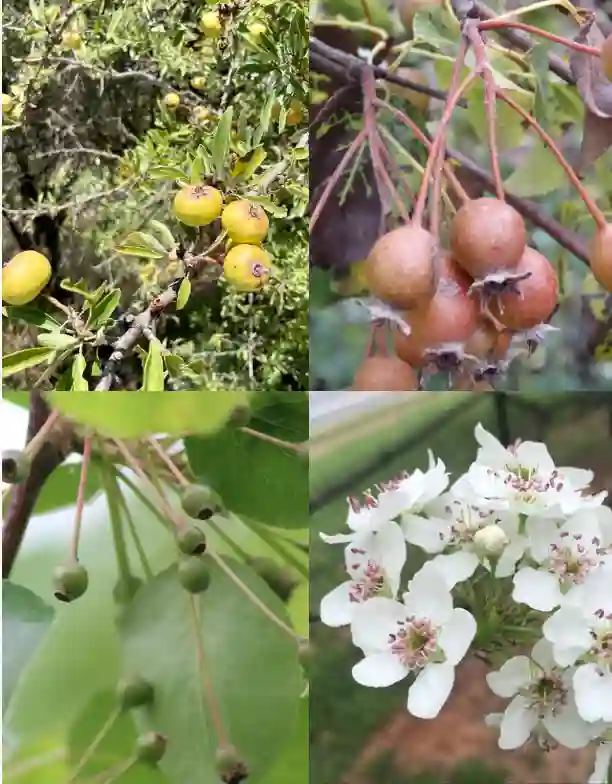
Magnolia Grandiflora vs Little Gem
In my experience, the Magnolia Grandiflora has always struck me with its grandeur and massive, glossy leaves, while the Little Gem is a more compact, manageable version that’s perfect for smaller gardens and still packs a punch with its fragrant blooms.
Magnolia Grandiflora vs Virginiana
I’ve found that the Magnolia Grandiflora’s large, showy flowers and robust presence make it a standout in my garden, whereas the Magnolia Virginiana offers a more delicate, understated beauty with its smaller leaves and flowers, fitting better in a subtler landscape.
371 Species in Genus Magnolia
Can you grow magnolia grandiflora in a pot?
Yes, I’ve successfully grown Magnolia grandiflora in a pot before, and it was quite a rewarding experience. I started with a young sapling and chose a large enough container to accommodate its root system. I made sure the pot had good drainage and used a well-draining potting mix. Regular watering and occasional fertilizing helped it thrive. However, I eventually had to transplant it into the ground because it outgrew its pot and needed more space for proper growth.
How fast does a magnolia grandiflora grow?
The growth rate of Magnolia grandiflora can vary depending on factors like climate, soil conditions, and care. In my experience, once established, it can grow moderately fast, adding several inches to its height each year. However, it’s not as fast-growing as some other trees, which I find quite appealing because it maintains a manageable size while still providing noticeable growth over time.
How to grow magnolia grandiflora from seed?
Growing Magnolia grandiflora from seed can be a fulfilling but patience-demanding process. I’ve tried it a couple of times with varying success. First, I collected fresh seeds from mature magnolia cones in the fall, making sure they were fully ripe. Then, I soaked the seeds in water for a day or two to soften their hard outer shell. After that, I planted them in a mixture of potting soil and perlite, keeping them consistently moist and warm until they germinated, which could take several weeks to a few months.
How to propagate magnolia grandiflora?
Propagation of Magnolia grandiflora can be done through various methods, but the one I’ve found most successful is hardwood cuttings. In late summer or early autumn, I take cuttings from healthy, mature branches, making sure they’re about 6 to 8 inches long and have several nodes. I remove the lower leaves, dip the cut end in rooting hormone, and plant them in a mixture of sand and peat moss. Keeping the soil consistently moist and providing bottom heat encourages root development, and within a few months, I usually have rooted cuttings ready for transplanting.
How to prune magnolia grandiflora?
Pruning Magnolia grandiflora is something I’ve learned through trial and error. I prefer to prune mine lightly and selectively, mainly to remove dead or damaged branches and to shape the tree for aesthetic purposes. I avoid heavy pruning, especially in late winter or early spring, as it can interfere with flowering. Instead, I prune immediately after flowering, which encourages new growth without sacrificing next year’s blooms.
Is magnolia grandiflora evergreen?
Yes, Magnolia grandiflora is evergreen, which is one of the reasons I love it so much. Its glossy, leathery leaves provide year-round interest in the garden, offering a beautiful backdrop for other plants and structures. Plus, the fact that it retains its foliage in winter helps maintain a sense of greenery and life in the landscape during the colder months.
When does magnolia grandiflora bloom?
Magnolia grandiflora typically blooms in late spring to early summer, usually from May to June in my region. The large, fragrant flowers are a highlight of the season, and I always look forward to their arrival. The timing of blooming can vary slightly depending on factors like climate and local conditions, but in general, it’s a reliable and breathtaking sight when it happens.
When to plant magnolia grandiflora?
I find that planting Magnolia grandiflora in the early spring or fall works best for ensuring its establishment and growth. These seasons provide milder temperatures and more consistent moisture, which are ideal conditions for rooting and acclimating to its new environment. I try to avoid planting during the hot summer months, as it can stress the tree and make it more susceptible to transplant shock.
Where to buy magnolia grandiflora?
I’ve found several reputable nurseries and garden centers where I’ve purchased Magnolia grandiflora trees over the years. Local nurseries are often a great option, as they typically carry a variety of plants suited to the region’s climate and soil conditions. Online retailers can also be a convenient choice, especially if I’m looking for specific cultivars or sizes not readily available locally. I always make sure to read reviews and check for certifications to ensure I’m getting healthy, high-quality plants.
Why is my magnolia grandiflora not flowering?
When my Magnolia grandiflora isn’t flowering as expected, it can be a bit disappointing, but I’ve learned that there could be several reasons behind it. One common issue is insufficient sunlight, as these trees generally prefer full sun to bloom abundantly. Another factor could be improper pruning, such as removing flower buds accidentally while shaping the tree. Additionally, environmental stressors like drought or nutrient deficiencies can also impact flowering. I try to address these issues by providing proper care, including regular watering, fertilizing, and ensuring adequate sunlight exposure.
Are magnolia grandiflora seeds edible?
While some parts of the Magnolia grandiflora tree are indeed edible, including its seeds, they’re not typically consumed due to their bitter taste and potential toxicity. The seeds are enclosed in a fleshy, cone-like structure that contains red berries when ripe. While birds and other wildlife may eat these berries, humans generally avoid them. However, I’ve heard of some traditional medicinal uses for parts of the magnolia tree, though I personally haven’t explored that aspect.
If i die, water my plants!



